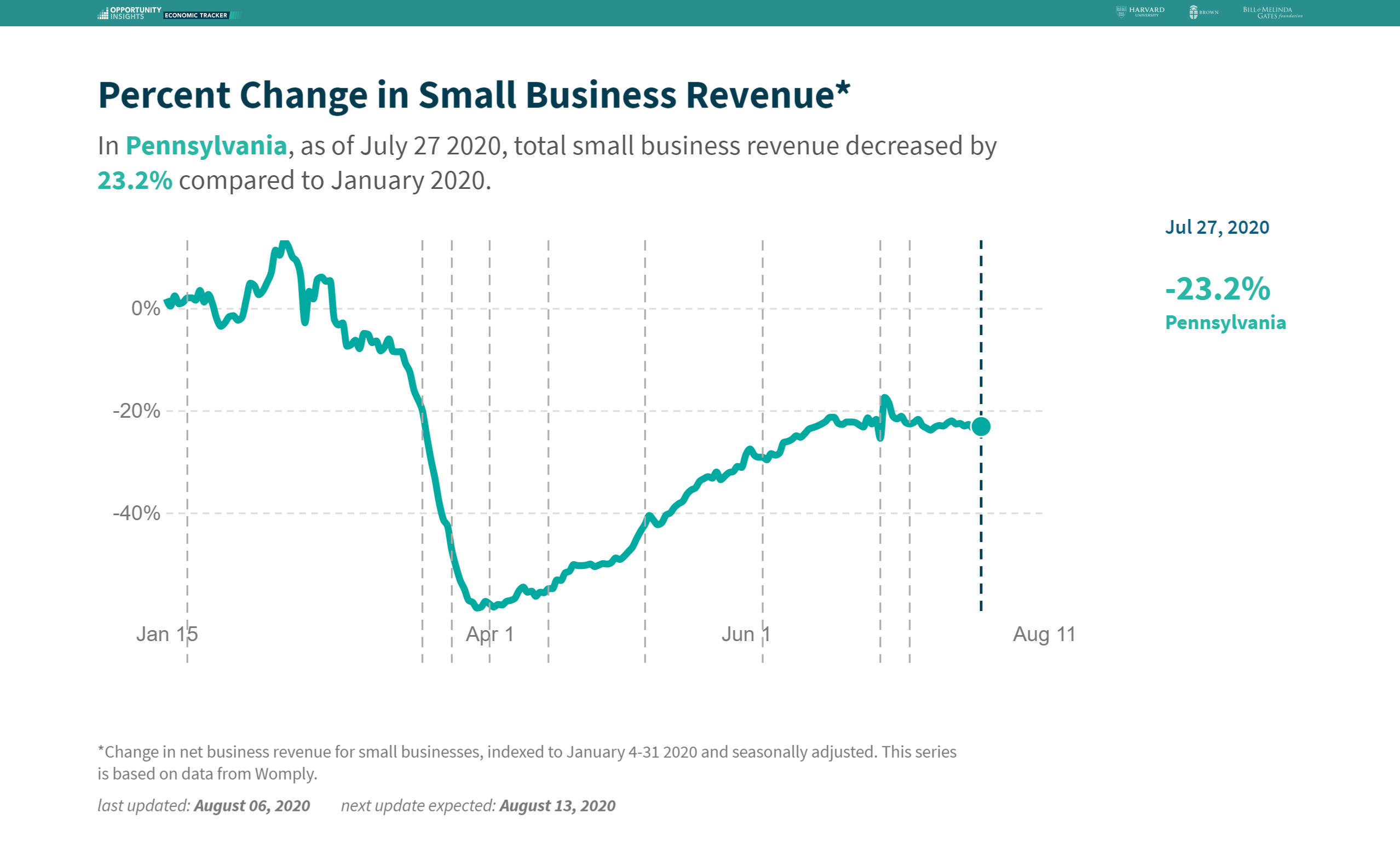Media

Struggling Small Businesses Overwhelm Govt. Lifeline
Nearly 50,000 Pennsylvania small businesses applied for COVID relief grants from state government over the last two weeks, catching bureaucrats off guard as local businesses continue to see steep revenue losses.
At a virtual announcement on Monday, Dan Betancourt, President and CEO of the Community First Fund and chairman of the Pennsylvania Community Development Financial Institutions, which administers the grant program, said: “We did not expect the damage from COVID would have been so great and the need would have been so great. I don’t know anyone could have predicted how many applications it would draw.”
In total, the 50,000 applicants requested $860 million, vastly more than the $225 million available to the Statewide Small Business Assistance program. Yesterday, the Wolf administration announced that about half of the funding—$96 million—would be awarded to 4,933 of the applicants. The average grant was about $25,000. Over half the grants were reserved for “historically disadvantaged” businesses.
Additionally, the program will now disperse the funding over two rounds rather than the four originally planned, due to the intensity of the need for aid. The final deadline to apply for a grant is midnight on Aug. 28. Applications can be submitted here.
“While it’s good to see this program provide COVID relief aid directly to small businesses, we must consider why so many are in need of this aid in the first place,” said Commonwealth Foundation Director of Policy Elizabeth Stelle. “The sweeping statewide shutdown implemented by the Wolf administration shuttered thousands of local businesses across the commonwealth. And the continued broad restrictions on businesses, especially restaurants and bars, without data to justify such measures, will bring thousands to the breaking point.”
Data from Wallethub shows that Pennsylvania currently has the second most COVID-related government restrictions in the nation. Experts have consistently tied these restrictions to economic suffering, predicting a wave of bankruptcies in the coming months.
Data from Womply, which was published by Harvard University’s Opportunity Insights Economic Tracker, shows that Pennsylvania’s small businesses have taken a massive hit. By March 28, a week after Wolf implemented the shutdown, small businesses were losing approximately 58% of their revenue. As of July 27, their revenue was still down nearly 25%.

The industries that the small business assistance program focused on were retail, food and hospitality, and health and wellness services such as barbershops and nail salons. These are all businesses that the Wolf administration is currently restricting despite all 67 counties being in the “green phase.”
In his statement announcing the grants, Wolf said, “As we continue to address this public health crisis, it’s critical that we also focus on our state’s economic recovery and supporting our small businesses across the state, which continue to be impacted by our necessary mitigation efforts.”
However, his claim that these mitigation efforts are necessary has been hotly disputed for weeks. Brian Sheehan of CBS 21 in Harrisburg has a six-part reporting series on his attempts to simply obtain the data the Wolf administration used to justify restricting the food and beverage industry to 25% occupancy.
“Pennsylvania’s policies must focus on saving lives and livelihoods,” said Stelle. “The sheer number of applications for small business grants on top of federal paycheck protection loans shows these restrictions are not sustainable. Too many livelihoods are being crushed.”